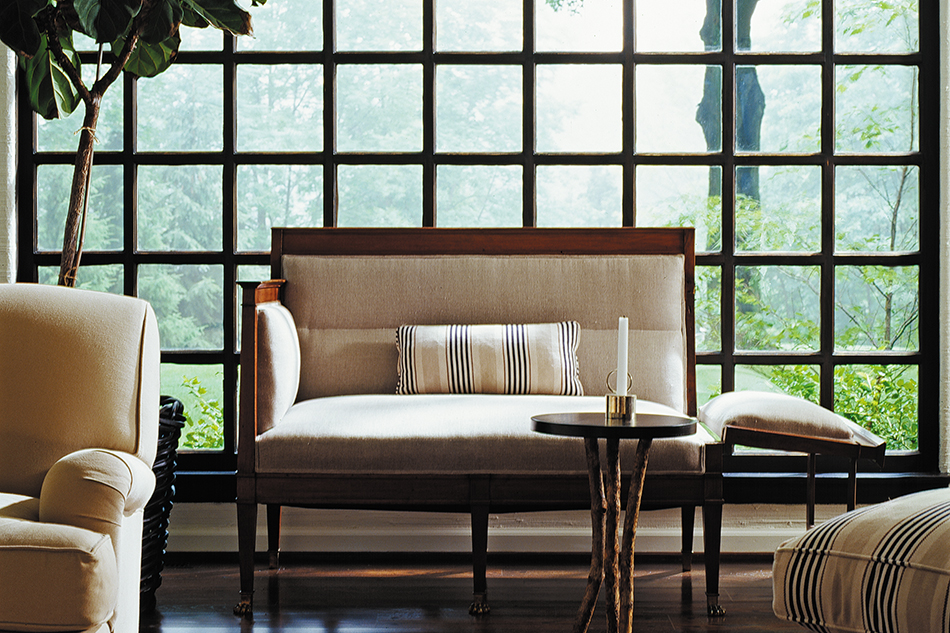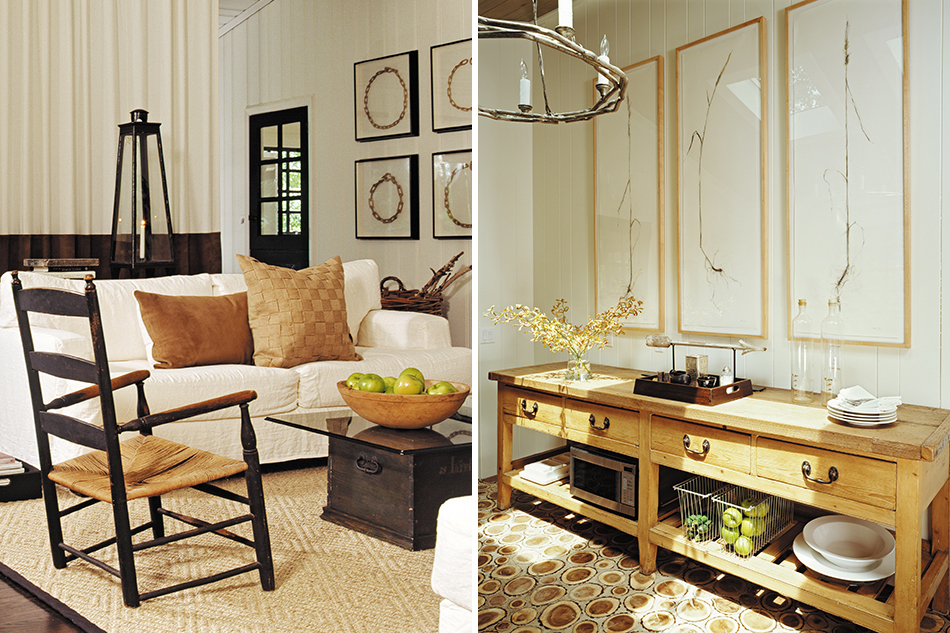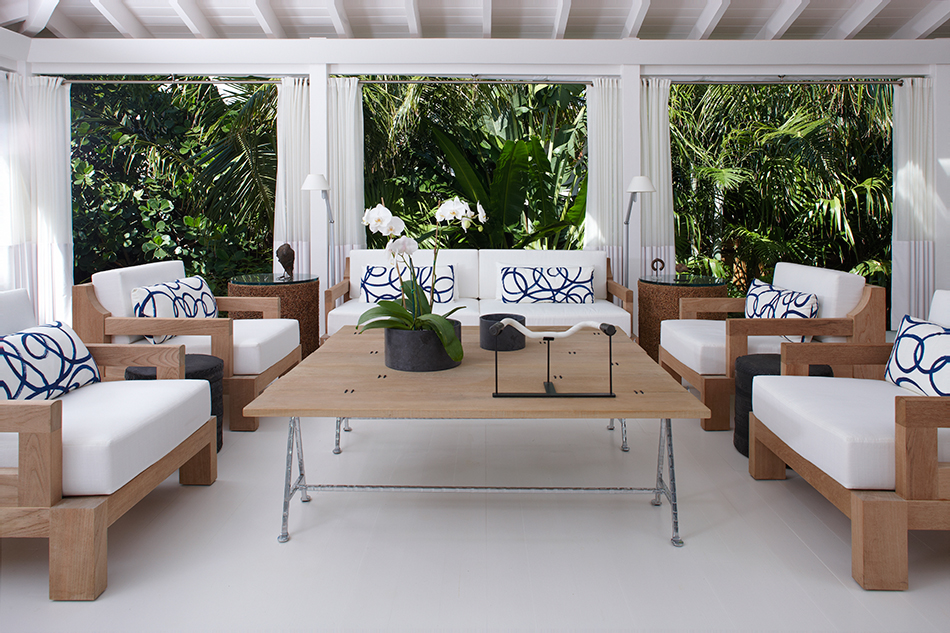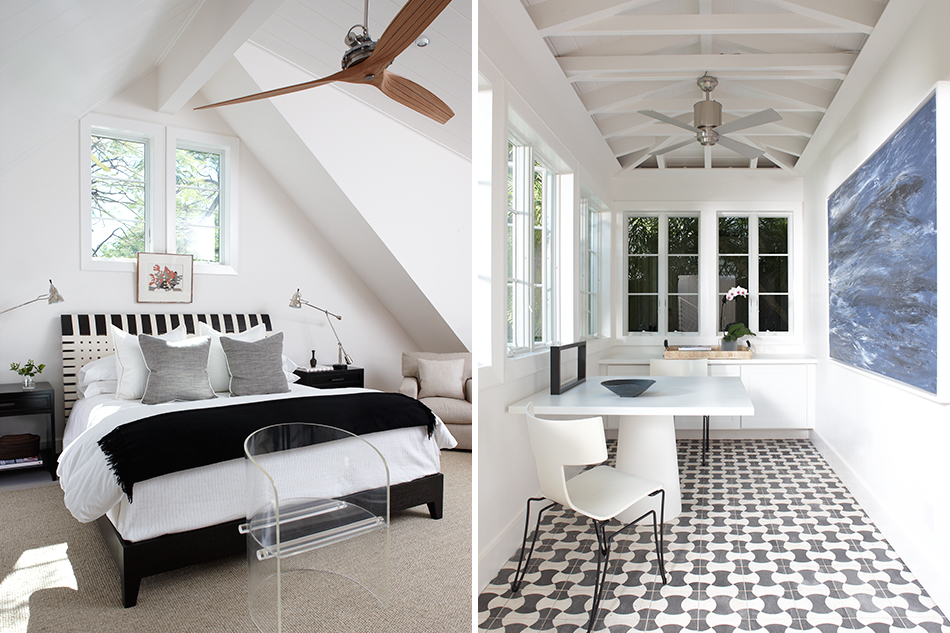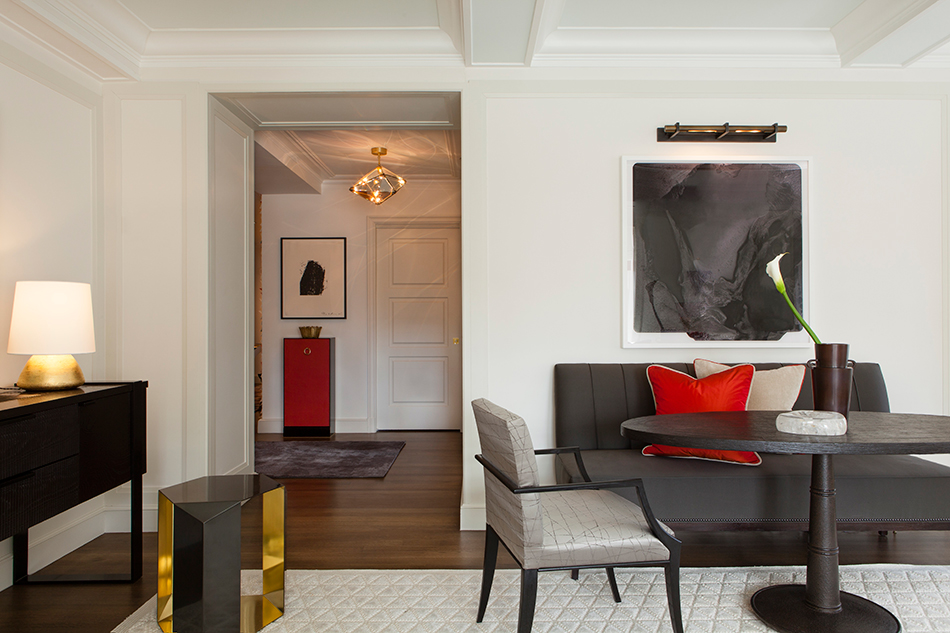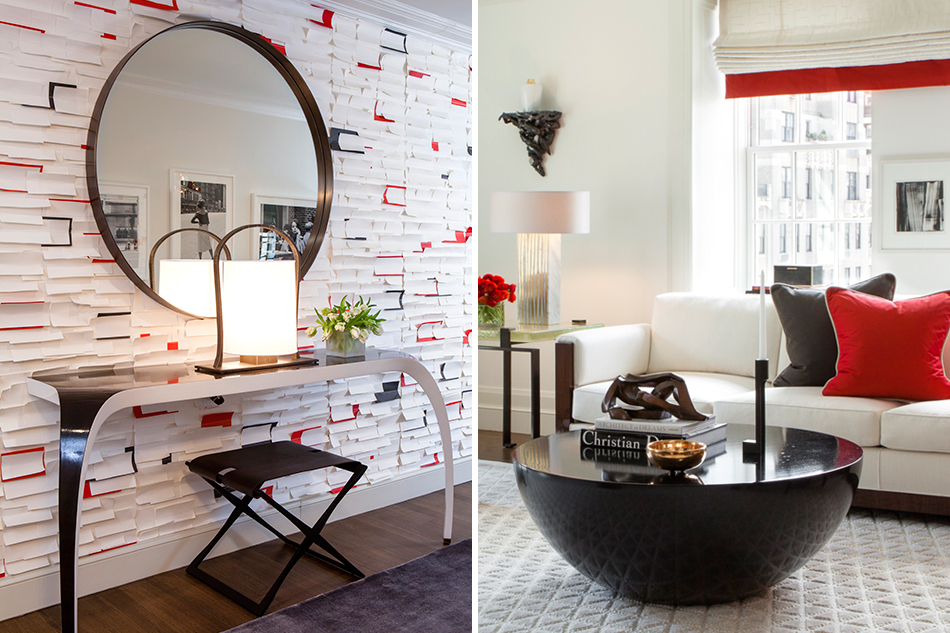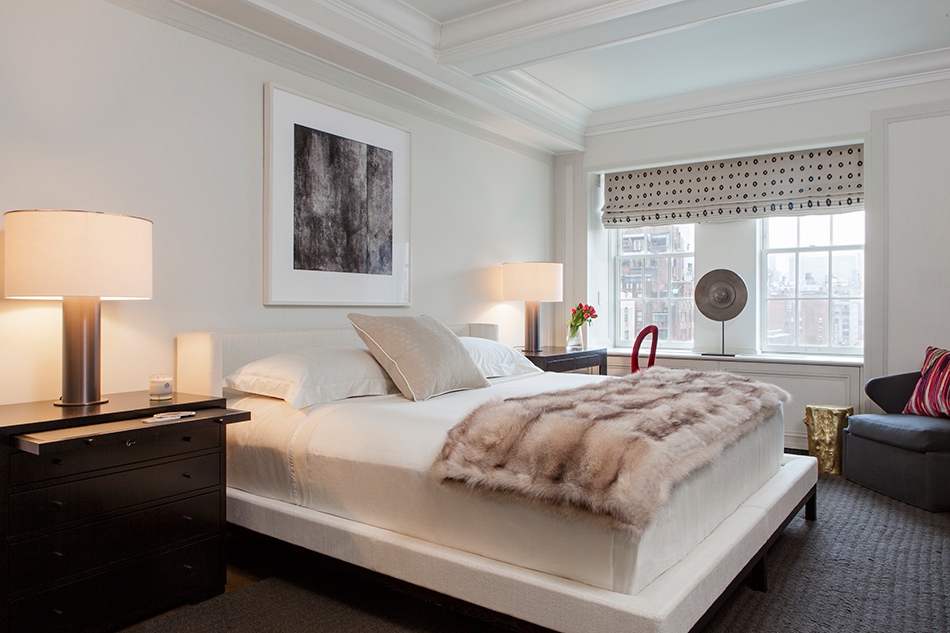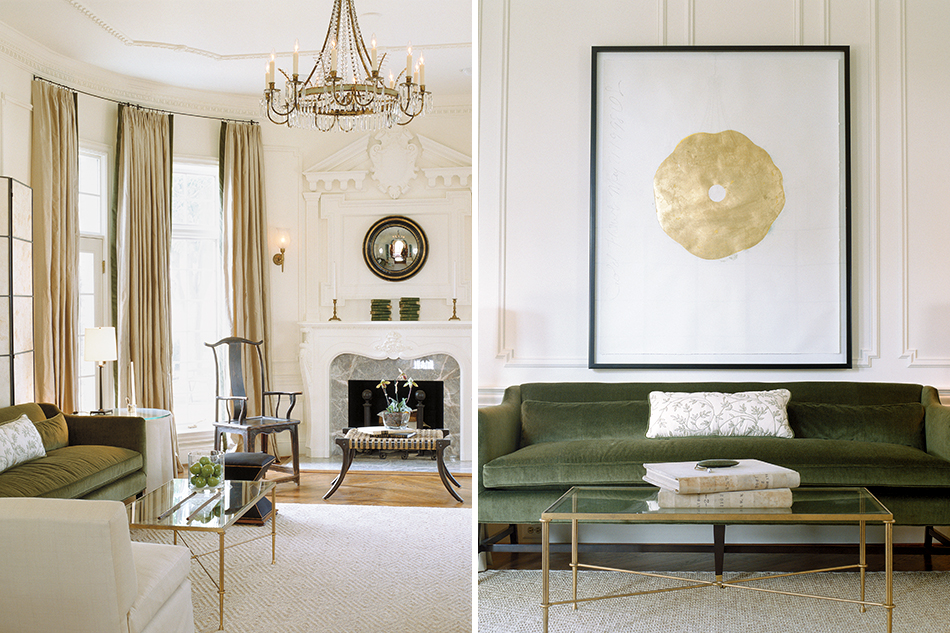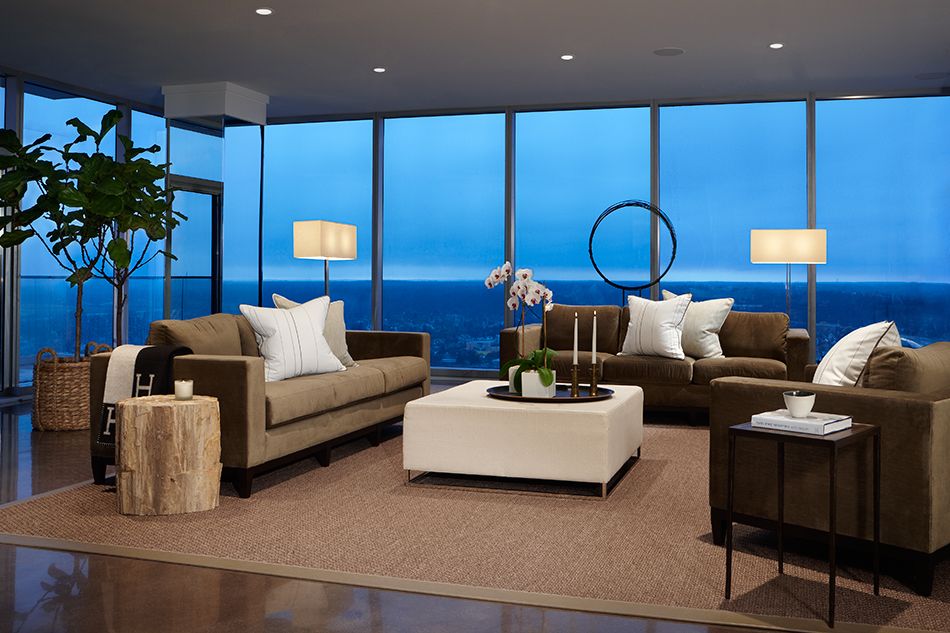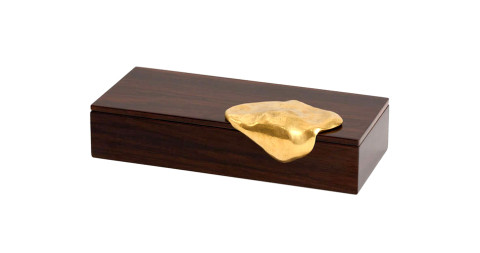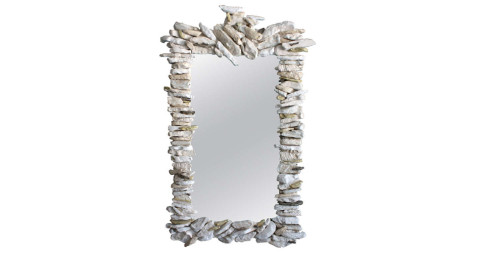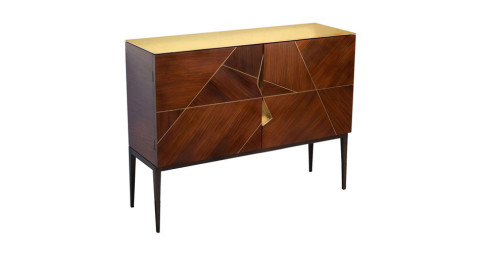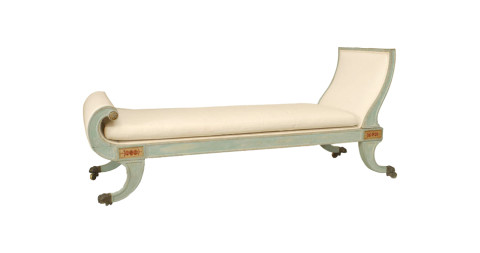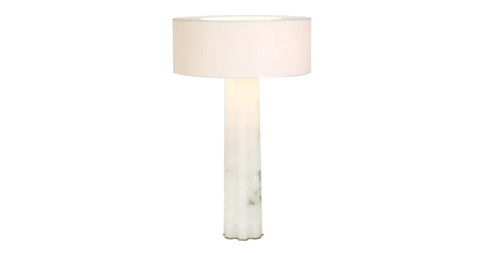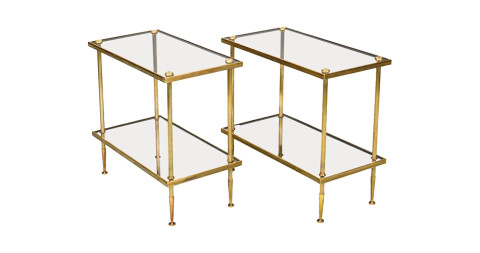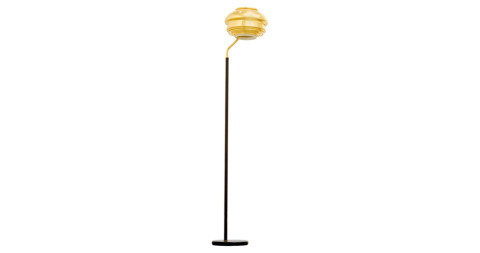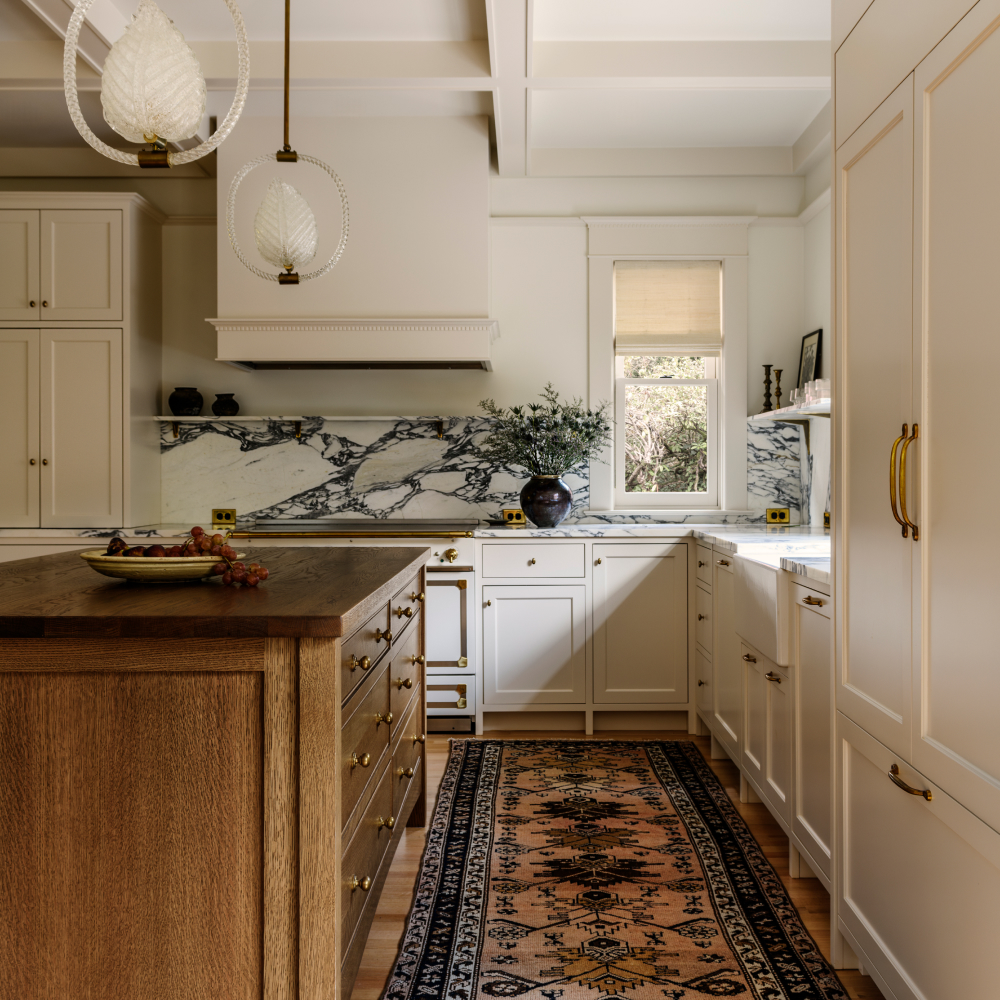
February 1, 2016Stephen Knollenberg founded his eponymous interior design firm in 2002, basing it in the Detroit suburb of Birmingham. Portrait by Lisa Spindler. Top: A living room in Bloomfield Hills, also a suburb of Detroit, features a James Brooks oil painting above the sofa and a Soane slipper chair near a collection of green, opalescent Moser Glassworks vases purchased at the 1stdibs Gallery at 200 Lex, in New York. Photo by Beth Singer
The son of Republican former congressman Joe Knollenberg, who represented the northern suburbs of Detroit for 16 years, Stephen Knollenberg could have followed his father into public service. Indeed, he studied political science at Boston University and walked past the school’s fine-arts building every day, Knollenberg recalls, “but I didn’t have a clue what the students inside were doing.”
Knollenberg had always loved design, however. Growing up in a mid-century house, he insisted on vetting his mother’s furniture choices, banishing pieces that didn’t suit the architecture. So after a few years in a family insurance business, he decided he had to satisfy his creative side. He asked Brian Killian, a prominent Detroit-area decorator, for a job, and got one, sorting swatches for $10 an hour. “There was a whole wall of fabric samples, hundreds of them, and after they came down, I had to put them back up in some semblance of order,” Knollenberg recalls today.
Far from resenting the menial job, he says, he felt he was getting an education. “Pretty soon I knew not only which fabrics looked good together, but what they were made of, how they would wear — it was a wealth of information.” Before long, Killian trusted Knollenberg with clients he didn’t have time for, and the soft-spoken young man found he could “listen to people, find out what they want and acknowledge that, but then maybe get them some place even better.”
Knollenberg was also attentive to the business side of interior design and after years of “seeing the money flying over my head” as an employee, he decided to open his own firm, Stephen Knollenberg Inc., in 2002. Since then, he has created some of the most elegant interiors in Michigan and, increasingly, in New York, Chicago and Washington, D.C., where he impresses clients with his ability to fill rooms with a sophisticated mix of old and new and high and low, all while giving each piece both its own space and a prominent position. His motto ought to be “No crowding.”

Knollenberg hired Paris’s Ateliers Charles Jouffre to wrap the millwork in the Bloomfield Hills library with the same gray flannel fabric used in the sofa. Edelman Leather flooring and agate sconces by Marjorie Skouras finish the space. Photo by Beth Singer
Detroit, recovering from years of steep decline, may seem like an odd setting for a high-end design firm. But, as Knollenberg somewhat wistfully points out, well-heeled suburbs like Grosse Pointe, Bloomfield Hills and Birmingham, where he is based, have not suffered the fate of Detroit proper. “There has been a line at 8 Mile” — the traditional border between the haves and have-nots — “for so long, it’s almost like we watched the city decline from afar,” he says. True, the region has experienced ups and downs tied to the fate of the auto industry, but he says they aren’t that different from the ups and downs of the financial industry in New York or the entertainment business in L.A.
And there are many things that make Detroit a terrific place to work. One is the influence of the Cranbrook Academy of Art, which produces a steady stream of talented designers. (Knollenberg buys as many pieces by Cranbrook students as he can.) Another is the presence in Michigan of companies like Knoll and Herman Miller, which means flea markets are filled with mid-century treasures. (And what he can’t find there, he often finds on 1stdibs.)
A third is the accessibility of Saugatuck, an artsy town with white sand beaches on Lake Michigan. Knollenberg has a house there, called Round Hill, that has not only been a retreat but a laboratory for trying out design ideas. Originally conceived as an all-American Midwestern cottage, the house is gradually becoming more cosmopolitan, as Knollenberg adds pieces like a cantilevered floor lamp made of leather-wrapped metal by French Deco designer Jacques Adnet. He also recently acquired a chair by Cranbrook graduate Kyle Fleet mostly made of rope and “more conceptual than practical,” he says. “You can sit on it, but it’s very springy.” What the pieces have in common are distinctive silhouettes, which Knollenberg makes sure people will notice. Indeed, a key to his designs is the way he places objects with graphic qualities against light backdrops — like a calligrapher working on crisp white stationery.
Knollenberg excels at “listening to people, finding out what they want and acknowledging that, but then getting them someplace even better.”

In Key West, Knollenberg placed a high-back chair by Swedish designer Marten Cyren at a 19th-century British Colonial desk. His clients collected the shelves’ artifacts while traveling in Papua New Guinea. Photo by Dana Hoff
That skill is in evidence at a ’50s beach bungalow in Key West, which his clients tasked him with refurbishing. The job entailed keeping the house’s bones but smoothing out its skin, producing a canvas on which the designer could “paint.” One corner of the master bedroom shows Knollenberg at his best, with an exaggeratedly tall Windsor chair from Stockholm paired with a British colonial desk, its base a Botero to the Swedish chair’s Giacometti. Shelves next to the desk display masks, headdresses and other artifacts collected by the clients in Papua New Guinea, each one an exquisite doodle.
Behind the house, Knollenberg added a large, covered terrace — it feels like an outdoor room — where the kind of black lines he favors crop up in the upholstery fabric.
When another client bought a New York pied-à-terre, Knollenberg began gathering objects to display there, including a pair of lumpy metal-glazed ceramic brackets by artist Eve Kaplan and an even chunkier coffee table, a solid block of mahogany from Toronto’s Lona Design. But this time he didn’t stick to his usual palette. Given his clients’ request that he make the interiors “pop,” Knollenberg added a number of accents in “bullfighter red.” The color appears in sofa cushions; the leather face of a cabinet in the foyer, made by Manhattan’s Roman Thomas; and a tour de force by London’s Tracy Kendall, who layers scraps of paper into what is less wallpaper than wall sculpture. “I’ve always wanted to use her work, but I needed the right place for it,” says Knollenberg. In front of the papered wall, a console from Randolph & Hein adds a sculptural wisp of macassar ebony and white lacquer.
Knollenberg travels to shop — from Manhattan’s Upper East Side to Palm Springs. But he always comes home to Detroit, a place he believes has given him opportunities equal to those he would have found on either coast. “There’s nothing I could do out there,” he says from his base in Michigan, “that I haven’t done here.”

